Vermes
Advanced Member level 4
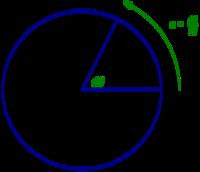
Angular frequency (also called angular speed, radian frequency, circular frequency, orbital frequency; remember that it is not the same as angular velocity) is a scalar measure of rotation rate and measures the frequency with which the phase changes. It is the magnitude of the angular frequency vector quantity. In other words, angular frequency is the number of orbits an object makes around another object is a certain time.
Look at the formula below (this formula presents angular frequency for an oscillation with period equal T, so that in this case we deal with one revolution which is equal to 2 Pi radians):
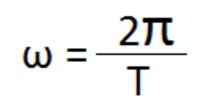
where:
ω – angular frequency (in radians per second)
T – period (in seconds)
Imagine a body that moves from point c to d in time equal to t:
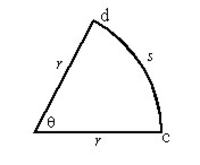
From that picture and using the formula above you can learn that the angular frequency of the object can be easily determined and transformed.
From the equation f=1/T, it is easy to transform that formula and we have:

where:
f – ordinary frequency (in hertz)
The angular frequency is equal to 2 times Pi times frequency. Okay, we have now an equation with frequency and a constant.
If we would like to write it using the movement along a circle, it would be:
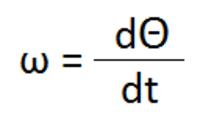
where:
Ө – change of the angle
The angular frequency is equal to the change of the angle in time.
Let's see some examples of angular frequency:
The most obvious example that can be very useful to understand the idea of angular frequency, refers to the motion of the hand of a clock. When you imagine it, the second hand makes one revolution within every 60 seconds. Knowing that and remembering the above formulas, it is very easy to calculate that the angular frequency of the second hand of a clock is 1/60 Hz.
Now you can go to the next example. Let us have a rope with a stone attached on one end of it (like in the stone-age). We grab the rope on the other side and start to wave it in a rotary way. Ok, now when the centrifugal force is bigger that the gravity force the rock is waving horizontally to the ground (it is not important but it is better to view it). The rock makes 2 revolutions per second, therefore:
the frequency is 2 [s to the power of -1] and we have:
angular frequency is equal to 2 time Pi (3.1415...) times 2
this angular frequency is equal 12.566 radius per second.
And in the end, the velocity (which, as you remember, is not a synonym of the angular speed):
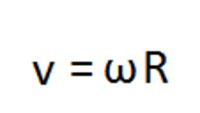
where:
R - the radius of the circle.
The velocity is the time derivative of the position of an object, it is a vector physical quantity. To determine the angular velocity, you have to know both the speed of an object and its direction of motion. The velocity can be constant if an object moves with a constant speed for a certain time and within that time the direction is not changed.